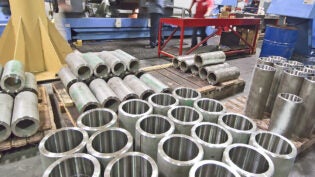
The following is a response I gave in a blog on small business branding. Their attitude towards branding was correct, but I took issue with their answer to a question about how to differentiate a company from the competition. The example company was a kennel, and they said the difference could be that they are cheaper and have better service. They arrived at this from basic analysis. I do not believe they dug deep enough; both are surface-level solutions that are too easy to defeat.
My response:
As much as I agree with your comments about differentiating yourself from the competition, I find the result of your example too simplistic. Whenever I am facilitating a brand project, I encourage beating the competition with boldness!
General service and low price are too easy; most companies have good service, and a price can be beaten in 2 seconds. I suggest you focus your brand on building a relationship solution where commodity solutions may not exist. You can’t win on price—that’s for sure.
But let’s say the kennel has a proprietary service where they use their own trademarked line of shampoos and lotions—then that ONLY they can offer this. Now you can build a relationship with your customers based on this difference in service. Once customers become accustomed to your brand of pet products, they will pay a premium to continue using them. Your kennel brand grows through a stronger reputation of quality.
When I work with companies on focusing their brands, it is absolutely amazing what solutions come out with regards to dealing with competition. But of course the companies have to have the guts to do it. Developing your own line of products can be quite daunting, but imagine the benefits. Just having your own line instantly makes the kennel appear like a larger player. It also positions them as experts in their category. The competition uses off the shelf materials; that’s not good enough for us. Custom products make the kennel a leader.
Another example of differentiating that resonated strongly concerns a manufacturer client of mine. As part of my branding process, I was facilitating a meeting with their branding team. Their conversation revolved around scoring that big client contract. A big win could make their year (this, I felt, was a conversation one could hear in practically any boardroom on the planet). After what seemed like hours of this, I asked them, “What if we stood this direction on its heels? Could you all meet your goals for success both on a corporate level and personally if we stopped going after the big one? After all, ALL our competitors are also targeting this group. What if we focused on the little guy, the guy who normally gets little attention except where there are holes to fill in the sales budget? Could we be the leader in this effort?”
Well, you could have heard a pin drop. Each looked at each and declared, “You know Ed, I’ll bet we can.” It never occurred to them that there was a segment that is screaming for attention. There was an industry tradeshow in Atlanta three weeks later. It was decided we would test this concept at the show. The booth display had a simple back-board that had the logo, a product, and the line, “The Leader in small-batch oral dose manufacturing” (small batch is the cue for small orders in their industry). It’s important to remember that it’s not enough to just state your differentiator; your brand must live it. They had to change how they worked with the little guy, understanding all the challenges working with this segment demands. You must live the brand—to do otherwise is only so much spin.
I got a call from the show floor: “Ed, you’re not going to believe it, but they (the little guys) are swarming to our booth.” At the show, they plugged a hole and delivered a message that absolutely resonated to a business segment that traditionally is ignored in favor of the large batch orders. This is brand positioning in its purest form. They differentiated themselves by taking a leadership role. Two years on, the positioning is still resonating, reflected in increasing sales and a clear understanding of their brand in their category.
So yes, if you are bold enough to really position yourselves as leaders in your fields you can develop powerful relationships. Most companies simply follow the leader and their brands and brand images reflect this. These are short lived differentiators developed with little thought but appreciated by competitors who appreciate how bold branding can really benefit them.
Published: May 7, 2013
3434 Views
3434 Views












